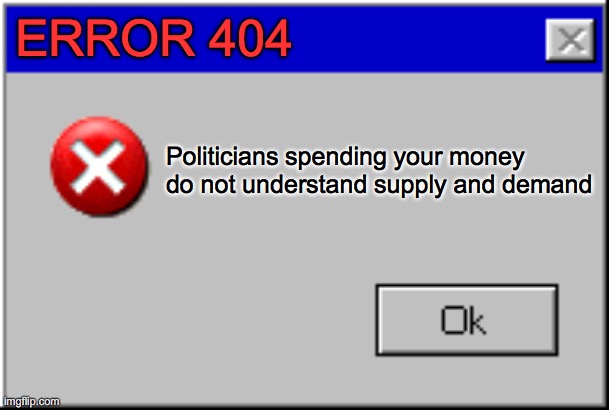Now that you understand supply, demand & pizza a little bit… Let’s make it a bit more complicated.
Now you know that if Demand exceeds supply, the price heads higher and if Supply exceeds Demand, then the price heads lower.
But supply and demand are not stagnant. In other words, they are always flowing and changing. There is always a different number of Iphones, t-shirts or soccer balls that can be bought and the demand for those items is always changing as well
But what happens if BOTH Demand and Supply are moving in the same direction? That is, Demand AND Supply are increasing? What if Demand and Supply are BOTH decreasing?
Are you confused yet?

I will use an example so you understand. Let’s say you are selling cars and there is a lot of people who are willing buyers, but there are also many companies manufacturing new cars. In this instance there are a lot of demand for a new car and a lot of supply to create new ones. SO how do we know what the price is?
Same Thing as Part 1.
It’s a question about WHAT is higher, supply or demand? Lets say last year you sold 5 cars and 5 new cars were created. This year, you sell 14 cars and 7 new cars are made, than then price will be increasing. Demand is HIGHER than fresh new supply even though BOTH are increasing compared to last year.

What if you were selling homes. Last year, you sold 20 homes and 20 homes were built/came onto the market. This year you sold 10 homes and 5 new were built/on the market. The price would… STILL Go UP! Even though BOTH are decreasing we can still see that the Demand for homes is HIGHER than the fresh new supply (10 vs. 5).

What if you were selling T-shirts. Last year you sold 100 shirts and 100 new shirts were made. This year you sold 120 shirts but 240 shirts were made.
| 100 Demand/100 Supply = 1 ratio | No Change in price |
| 120 Demand/240 Supply= 0.5 Ratio | Supply was increased relative to Demand– Price Decrease |
I wanted to highlight 3 things to learn here.
1) That the supply of items and demand for those items are ALWAYS changing
2) Supply and Demand can both rise or fall together
3) Whichever “wins” when you compare them, dictates the price direction as we learned in Part 1.
It is very important to understand this. Sadly, many important people you may see on television do not understand this pricing mechanism. This is why price controls do not work!
Example
If your favourite politician says “Bread can be no more than 5 dollars” (chances are bread is expensive because of thats what it costs to make, ship, tax, etc.) But what if you’re a bread-maker? What if it costs you $4.95 to make a loaf of bread but you can only sell it for $5.00 (1% margin)? Two things happen and they both lead to the same result.
- Circumstances change and the cost for you to make bread goes from $4.95 to $5.25
- You decide that your time making bread is not worth a 1% return (5 cents per loaf).
Both lead to you NOT making anymore bread.
Wait a minute… that means less supply of bread…. What will this do to price of bread if we take away supply? You got it. The exact opposite as the intention. A massive price INCREASE
I hope I was able to teach you! Share as much as you can to see if I can also teach some world Presidents!
#StayOnTheBall



